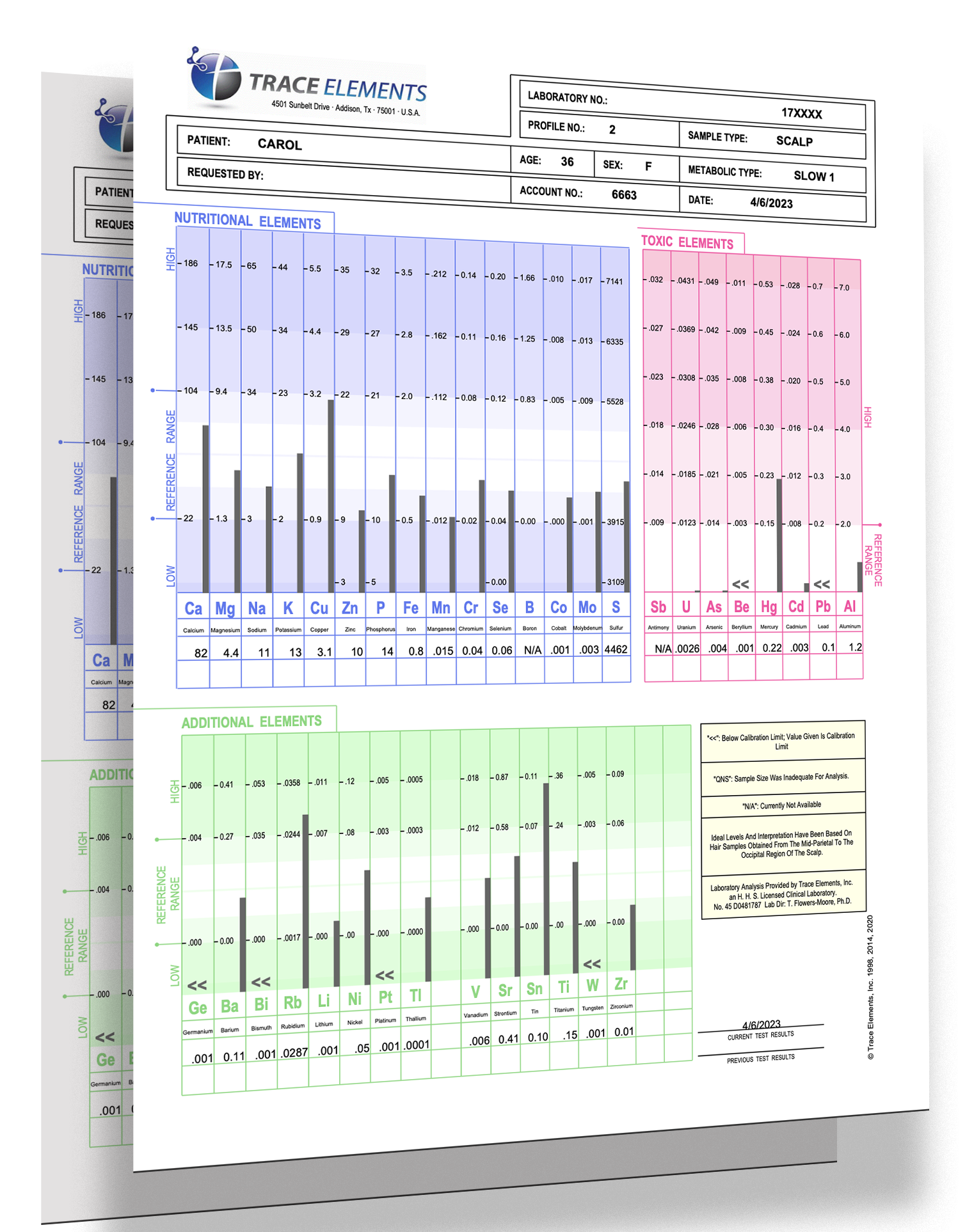×

×
Not Sure Which HTMA Profile Is Right For You?
Try the HTMA Profile Selection Quiz to help you select the profile that best matches your needs.

Hair Tissue Mineral Analysis (HTMA) is an analytical metabolic profiling test which measures the mineral content of the body that reflects the level of nutrients and toxic elements in body tissue. It is regarded by integrative doctors, naturopaths and nutritional therapists as one of the most valuable screening tools available in everyday and preventative health care.
Hair is a body tissue made up of mostly dead, keratinized cells fused together. The shaft of the hair is the portion that projects from the skin’s surface. The root of the hair, below the skin’s surface, contains living matrix cells from which the hair grows. Matrix cells depend on the blood supply for nourishment and growth. As they grow and divide, minerals are keratinized into the growing hair shaft, creating a permanent record of metabolic activity and exposure to toxic elements.
Research has shown that hair tissue is useful in indicating nutrient imbalances and exposure to toxic elements. If your health, diet or environment has created a mineral imbalance or toxic mineral excess, it will be recorded in the hair shaft.
Both physical and emotional stress can lead to mineral imbalances. B-complex vitamins, zinc and magnesium are lost in greater quantities when you are stressed; you also absorb less nutrients from your food.
Fad diets and diets high in refined carbohydrates, flour, sugar, industrial seed oils and alcohol can lead to mineral deficiencies and excesses.
Many deplete the body’s store of nutrient minerals and can increase levels of toxic minerals. Medications such as diuretics, the oral contraceptive pill, antacids and aspirin can all cause vitamin and mineral deficiencies.
A predisposition towards certain mineral imbalances, deficiencies and excesses can be inherited from parents. Certain individuals can also inherit a higher requirement than normal for particular nutrients to maintain good health.
Toxic minerals such as lead, mercury and cadmium can interfere with mineral absorption and increase mineral excretion. They build up in our bodies from sources such as: air pollution, car exhaust, cigarette smoke, unfiltered water and food.
Supplements can also lead to mineral excesses and deficiencies. For example, excess calcium intake can cause phosphorus and magnesium deficiency. Continued magnesium deficiency increases sodium levels and eventually causes vitamin A deficiency.
Health conditions that can be helped with Hair Mineral Testing:
WHAT CAN I TEST FOR?
QUALITY ASSURANCE
HOW TO TAKE SAMPLE?